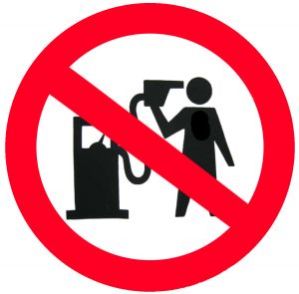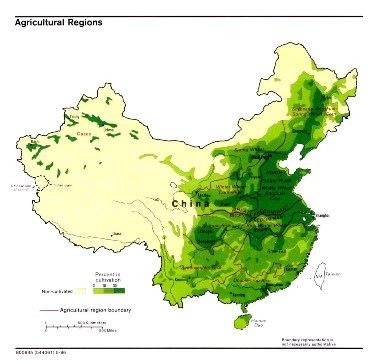The 2009 Nobel Prize in Economic Sciences
by Michael Enriquez A few weeks ago, the committee that awards the Nobel Prize in Economic Sciences announced the winners of the 2009 award. The prize winners were Elinor Ostrom of Indiana University and Oliver Williamson of the University of California, Berkeley. The committee awarded this year’s prize to these economists for their work in economic governance. For Ostrom, the committee cited her research on the methods that actors use to avoid over utilization of common property resources. Williamson’s research provided theory on the conditions under which firms are better suited for economic organization than markets.
A few weeks ago, the committee that awards the Nobel Prize in Economic Sciences announced the winners of the 2009 award. The prize winners were Elinor Ostrom of Indiana University and Oliver Williamson of the University of California, Berkeley. The committee awarded this year’s prize to these economists for their work in economic governance. For Ostrom, the committee cited her research on the methods that actors use to avoid over utilization of common property resources. Williamson’s research provided theory on the conditions under which firms are better suited for economic organization than markets.Ostrom found numerous examples in which actors had successfully avoided the “tragedy of the commons.” Standard theory had found that common property resources are too often exploited to the point of inefficiency and depletion. Ostrom examined numerous case studies in which actors avoided resource depletion through various governance structures. Much of her insight involved applying theories of repeated games in which actors may punish others who over extract common property resources.
Williamson provided theory to explain firm organization and conditions under which economic activity is better suited to take place within a firm than in a competitive market. An important basis for his theory involved the timing of work and bargaining. For instance, agreements made prior to work being performed can break down once the work is completed due to a change in the bargaining position of the actors. When the work is highly firm-specific then the actor who completed the work may find himself in a weak market position with only a single prospective buyer. In contrast, by arranging activity within a firm, the ex-ante and ex-post market issues are avoided. Similarly, the firm provides a clear hierarchy of authority which can help to clearly dictate the work that must be done. However, Williamson’s research also highlights an important disadvantage of firms: authority is prone to abuse.
The research of both Nobel Prize winners provided a richer framework for analyzing economic activity through its insight into governance. To learn about their research in greater detail, see the scientific background paper provided by the Nobel committee.
Discussion questions:
1. Describe some ways in which common property resources may be governed for the long term benefit of stakeholders. What are some of the difficulties involved in such governance?
2. What are some of the other advantages or disadvantages of firms, when compared to markets, which are not described above?
3. What other economic governance issues do you observe? Are these issues dealt with in a way that improves or worsens economic efficiency?
Labels: Efficiency, Game Theory, Nobel Prize, Property Rights, Resource Allocation





 It’s 85 degrees and sunny on this October day in the Bay Area, and this morning’s review of the
It’s 85 degrees and sunny on this October day in the Bay Area, and this morning’s review of the 
 Next week, we can expect the winner to be announced for this year's Nobel Prize in Economics. (Last year, the Aplia Econ Blog posted an
Next week, we can expect the winner to be announced for this year's Nobel Prize in Economics. (Last year, the Aplia Econ Blog posted an  The charitable organizations represent additional sellers in the Kenyan market for soybean oil. The supply of soybean oil in the Kenyan market rises, leading to a reduction in soybean oil prices. The lower price of soybean oil can impact local farmers in a couple of different ways. If a local farmer produces soybeans, the decrease in price obviously reduces her profit margin and directly lowers her income. However, the impact need not be so direct. A local farmer producing a substitute for soybean oil, such as sunflower seed oil, will see the demand for his product decline as well due to the decrease in soybean oil prices.
The charitable organizations represent additional sellers in the Kenyan market for soybean oil. The supply of soybean oil in the Kenyan market rises, leading to a reduction in soybean oil prices. The lower price of soybean oil can impact local farmers in a couple of different ways. If a local farmer produces soybeans, the decrease in price obviously reduces her profit margin and directly lowers her income. However, the impact need not be so direct. A local farmer producing a substitute for soybean oil, such as sunflower seed oil, will see the demand for his product decline as well due to the decrease in soybean oil prices. The result is the same—lower income for Kenyan farmers producing products that somehow compete with the subsidized commodities that the charitable groups sell to raise funds. Keep in mind that the percentage of the Kenyan population employed in agriculture is much higher than in the United States.
The result is the same—lower income for Kenyan farmers producing products that somehow compete with the subsidized commodities that the charitable groups sell to raise funds. Keep in mind that the percentage of the Kenyan population employed in agriculture is much higher than in the United States. Where smoothly functioning markets exist, they generally do an efficient job of answering the fundamental economic questions—what gets produced, how it gets produced, and who receives it. Not everyone will be happy with those answers, but there is efficiency in the sense that to make any person better off would require making at least one other person worse off.
Where smoothly functioning markets exist, they generally do an efficient job of answering the fundamental economic questions—what gets produced, how it gets produced, and who receives it. Not everyone will be happy with those answers, but there is efficiency in the sense that to make any person better off would require making at least one other person worse off.




